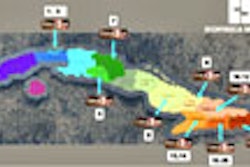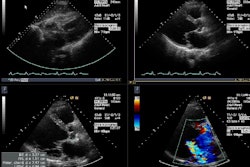The use of the personal digital assistant (PDA) in medicine has shown strong growth over the past few years, with software such as drug databases and clinical references driving its adoption. Still, even though radiologists are as likely as other medical subspecialties to use PDA devices, they lag behind their clinical colleagues in incorporating the technology as part of their medical practice, according to data published in the journal RadioGraphics.
"Radiology has been at the forefront of implementing technology to improve workflow and diagnosis of disease (e.g., digital imaging, PACS, computer-aided diagnosis, voice recognition)," wrote study authors Drs. William Boonn and Adam Flanders from the department of radiology at the University of Pennsylvania Health System and Thomas Jefferson University Hospital in Philadelphia.
The researchers created a survey to determine how many RSNA members used PDAs and what types of software applications they had installed on the devices. The survey was sent out twice and contained 24 multipart questions on areas such as PDA user demographics, hardware and software use, user satisfaction, and the potential for future use.
The duo administered surveys to 1,628 randomly selected North American active and training members of the society and received 528 (32.4%) completed responses. There were 417 male respondents (79%) and 104 female respondents (19.7%), with 34.3% of those being in academic practice and 60.4% in private practice. Residents and fellows made up 17.2% of the survey population, with board-certified radiologists comprising 78.2% of the total.
They then compared the results with other published surveys of physician PDA utilization.
"It was found that slightly less than one-half of respondents used PDAs on a daily basis, a finding that was comparable to that in the internal medicine surveys," Boonn and Flanders wrote (RadioGraphics, March-April 2005, Vol. 25:2, pp. 537-541).
Sixteen percent of the respondents used the Pocket PC (Microsoft, Redmond, WA) operating system, while 75.2% of the PDAs utilized the Palm (PalmSource, Sunnyvale, CA) architecture. The survey data showed that 62% of the PDA users had color screens; of this group, 79% had PDA displays with a resolution greater than 240 x 320 pixels. However, only 16% of the total respondents with PDAs had devices with built-in wireless networking connectivity, a concern for possible RIS/PACS communications options.
"Nearly all PDA users (98.3%) used the address book and calendar functionality of their devices," Boonn and Flanders wrote. "Only a small percentage (13.6%) used their devices for e-mail or Internet access, whereas 21.7% and 31.2% used their PDAs for general medical references and drug references, respectively."
About one-fourth (24.6%) of the participants had a radiology application on their PDA, according to the authors. The most popular applications were reference works, both with and without images, and the American College of Radiology's Appropriateness Criteria. PACS and RIS applications represented about 2% of the installed radiology software, reported Boonn and Flanders.
"Less than one-quarter of PDA users had radiology-specific applications installed on their devices, whereas a greater percentage of internal medicine users had medical software such as drug databases and clinical references on their PDAs," they wrote.
The authors noted that fellows and residents were far more apt to have radiology-specific applications installed on their PDA devices than were practicing radiologists -- 40.4% compared with 19.5%, respectively.
It can reasonably be argued that radiology, because of its use of high-tech imaging equipment and powerful informatics systems, has a strong proclivity to embrace new technologies in its practice. Boonn and Flanders suggested that the use of PDAs in radiology is severely limited by the dearth of applications available for the devices. An Internet search conducted by the researchers found that radiology software for PDAs comprised around 4% of the available medical applications.
"Although overall usage of PDAs in radiology is similar to that in other specialties, it is surprising that the development and availability of PDA applications specific to modern radiology are lacking compared with those of applications specific to other specialties," they wrote.
By Jonathan S. Batchelor
AuntMinnie.com staff writer
October 12, 2005
Related Reading
PDAs expected to change healthcare in future, September 30, 2005
PDAs show promise for RIS/PACS portability, May 13, 2005
Skyscape, Satellife refit PDAs for African doctors, December 9, 2004
Mobile computing aids ED/radiology communications, August 6, 2004
PDAs do little to reduce documentation discrepancies, March 18, 2004
Copyright © 2005 AuntMinnie.com



















